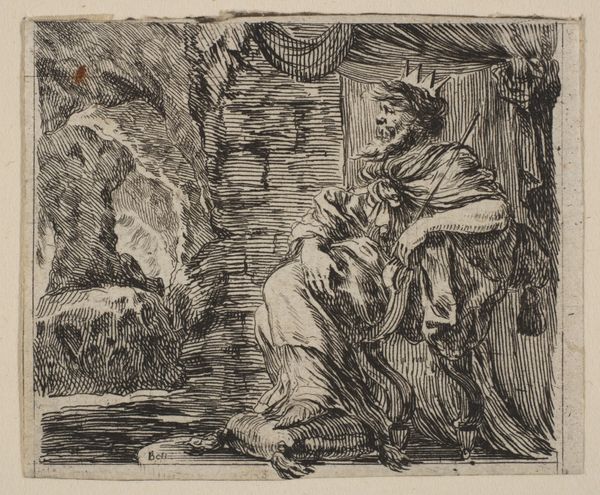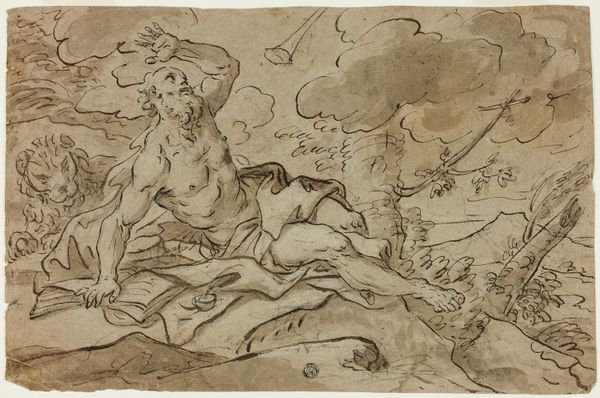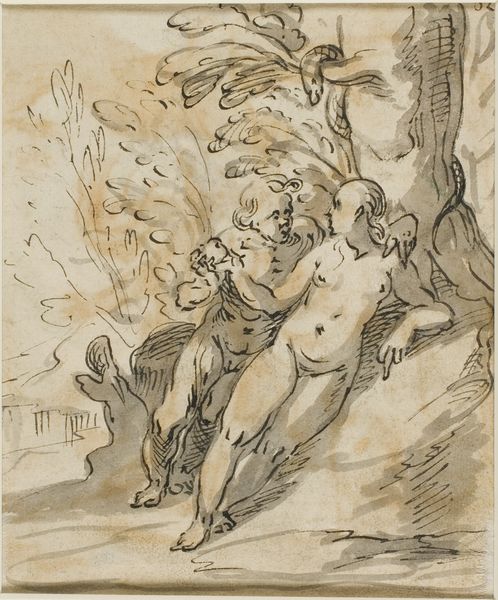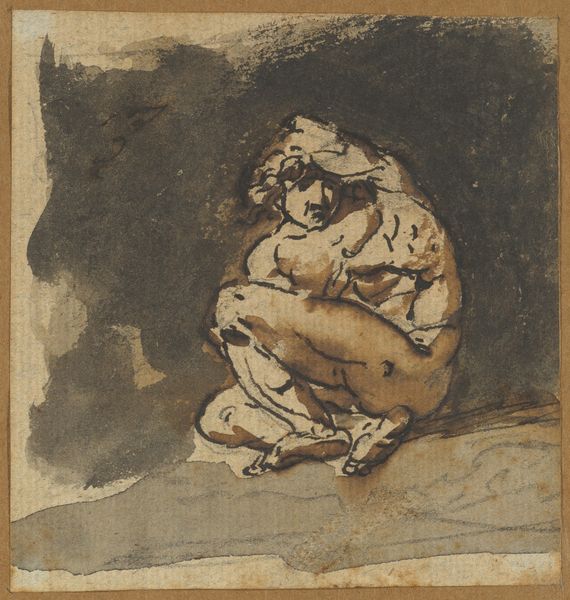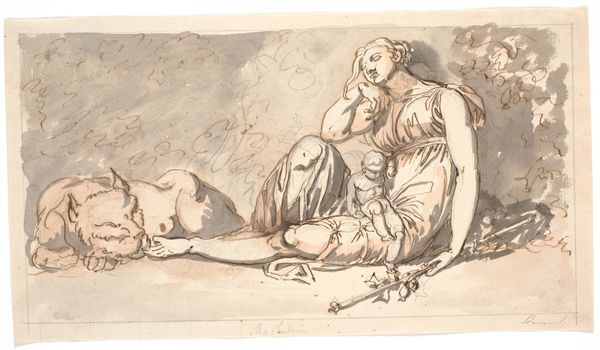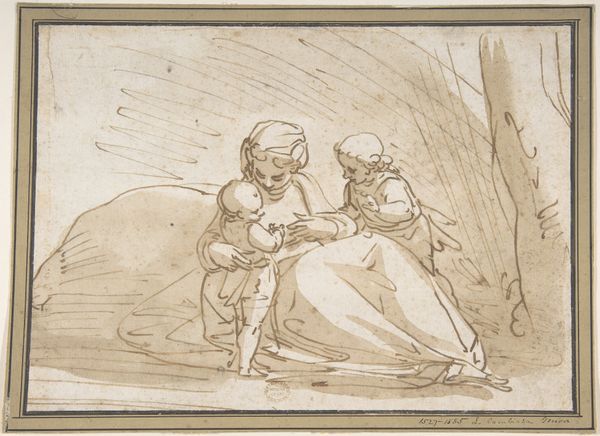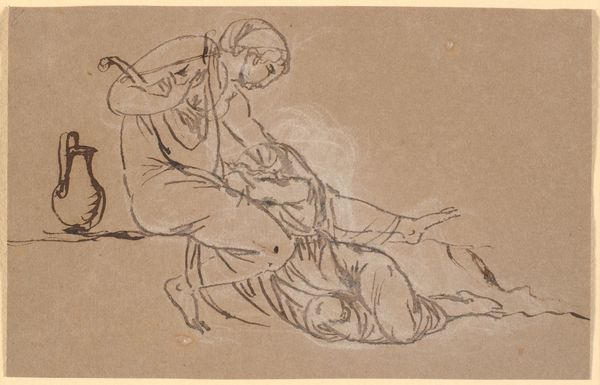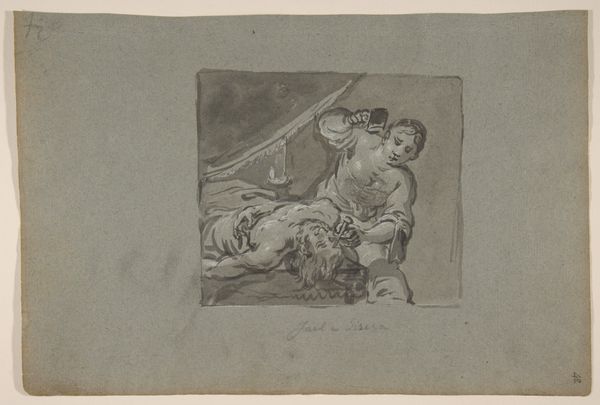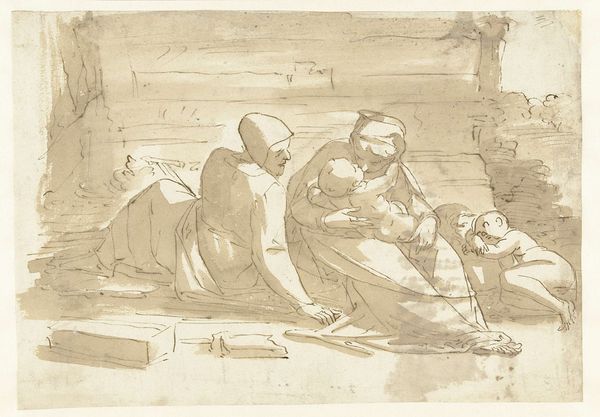
Liggende kvindefigur symboliserende den muhamedanske religion 1787 - 1789
0:00
0:00
drawing, ink, pen
#
drawing
#
neoclacissism
#
ink drawing
#
allegory
#
pen sketch
#
figuration
#
ink
#
pen
#
history-painting
Dimensions: 111 mm (height) x 216 mm (width) (bladmaal)
Curator: Looking at this sketch, I immediately sense a tension between power and contemplation. Editor: Indeed. What we have here is Nicolai Abildgaard’s ink drawing, made with pen, entitled “Liggende kvindefigur symboliserende den muhamedanske religion,” dating from around 1787 to 1789. In English, that’s “Reclining female figure symbolizing the Mohammedan religion.” Curator: It’s definitely a potent and somewhat problematic representation, especially given our contemporary understanding of how religions are often depicted through a Western gaze. I find it curious how he chose to embody an entire religious system in the form of a reclining woman. What commentary is Abildgaard making about power dynamics and societal perceptions of the Islamic faith in 18th-century Europe? Editor: Well, let’s consider the period. The late 18th century was a time of increasing fascination with the "Orient," albeit often filtered through colonial perspectives. Abildgaard, known for his Neoclassical style and interest in historical subjects, would likely have been drawing from existing European allegorical traditions. The woman, the book, and the sword become symbols deployed to define and, perhaps, even critique the perceived essence of this ‘Mohammedan religion’ for a European audience. Curator: The contrast is definitely striking. The blindfold and the sword, while classically allegorical, suggest notions of justice, yet it also implies a sense of enforced doctrine. And this book seems almost weightless in her lap, a very material representation. Editor: Certainly. By using a classical artistic vocabulary for this allegorical personification, Abildgaard also positions Islam in relation to European history and artistic heritage. It’s a power play of representation, framing the “other” within the viewer's cultural framework. Curator: I agree. Considering his position as a prominent artist within a specific historical and cultural context, it’s crucial to analyze the power structures in play and unpack any underlying biases or orientalist undertones embedded within this portrayal. Editor: Absolutely. It underscores the importance of understanding how cultural and socio-political contexts actively shape artistic expression. Thank you for that astute reading, it’s clear the drawing acts as an entryway into larger discussions. Curator: The sketch challenges us to dissect representations critically and be mindful of their origins and lasting impact. It leaves us grappling with historical frameworks and how art continues to echo across centuries.
Comments
No comments
Be the first to comment and join the conversation on the ultimate creative platform.

